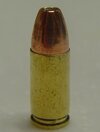Charlie98
Member
That’s a ways off as i have some newish Remington brass to play with for now.
Eliminating variables will help you establish sound handloads. Starting with new... or newish... brass is one of them.
Some split open leading me to believe they’re brittle. Plus they are noticeably harder in the resizing and bell die.
That's an indicator... for sure... but 'hard' brass, and 'brittle' brass are two different things.
FWIW, I've had absolutely brand new brass I bought as components, from a leading manufacturer, crack on the second firing... in a mid-range .38SPC load, nothing pushing any boundaries. It was brittle from the manufacturer... it happens. After that episode, I've gotten to the point that if I see signs of brittleness... case cracks, case mouth cracks... it goes in the scrap bucket as a lot, and I start over. Contrast that, I've got a few lots of handgun brass that are going on 30 years old, including a 1000cs lot of RP .41MAG brass, loaded 10+ times, at least, with anything from mid-range loads of Unique, to max loads of IMR4227 or W296... without issues. However... as soon as I start seeing case splits... as much as I love my RP brass... it's going in the can.


